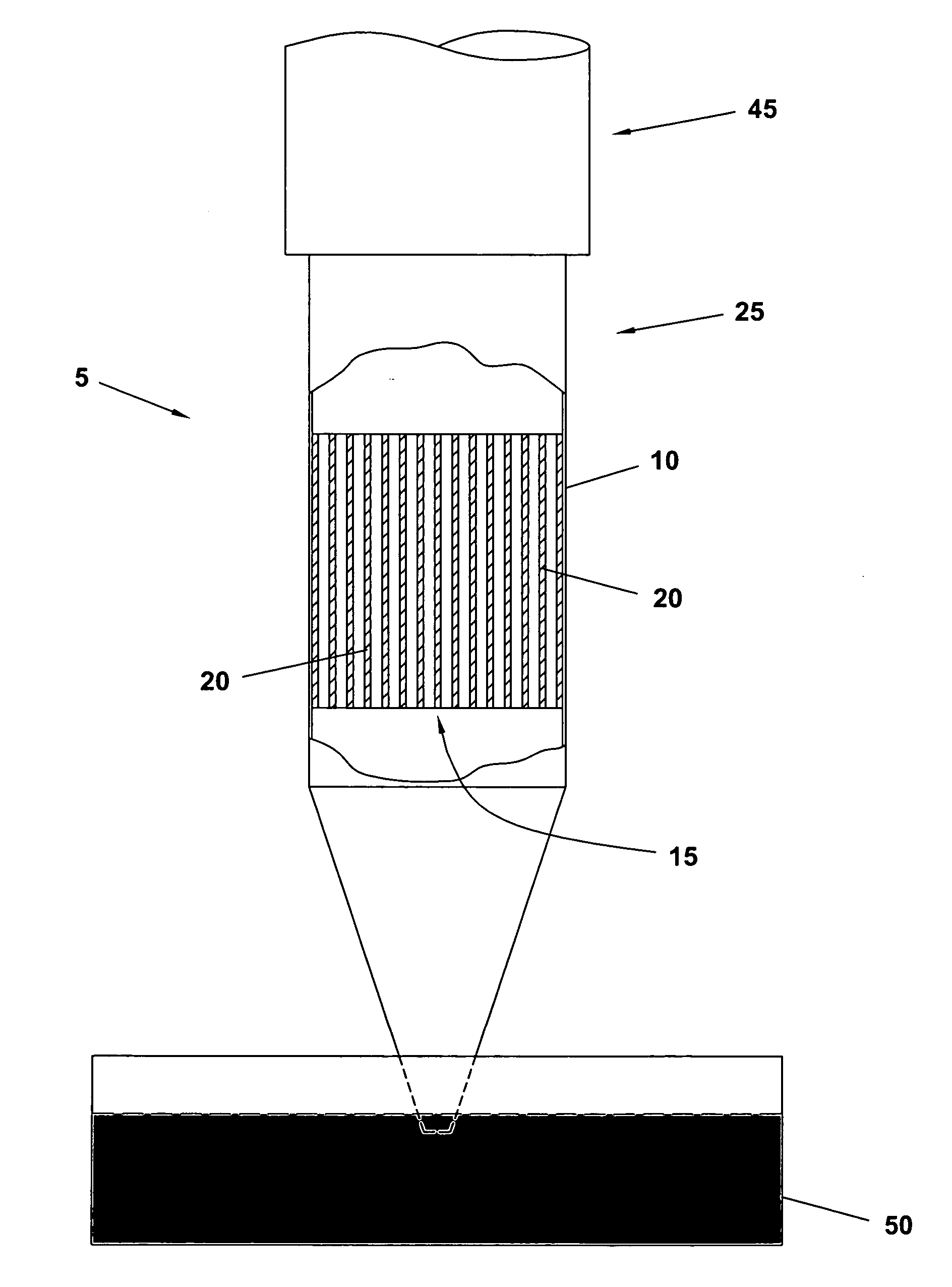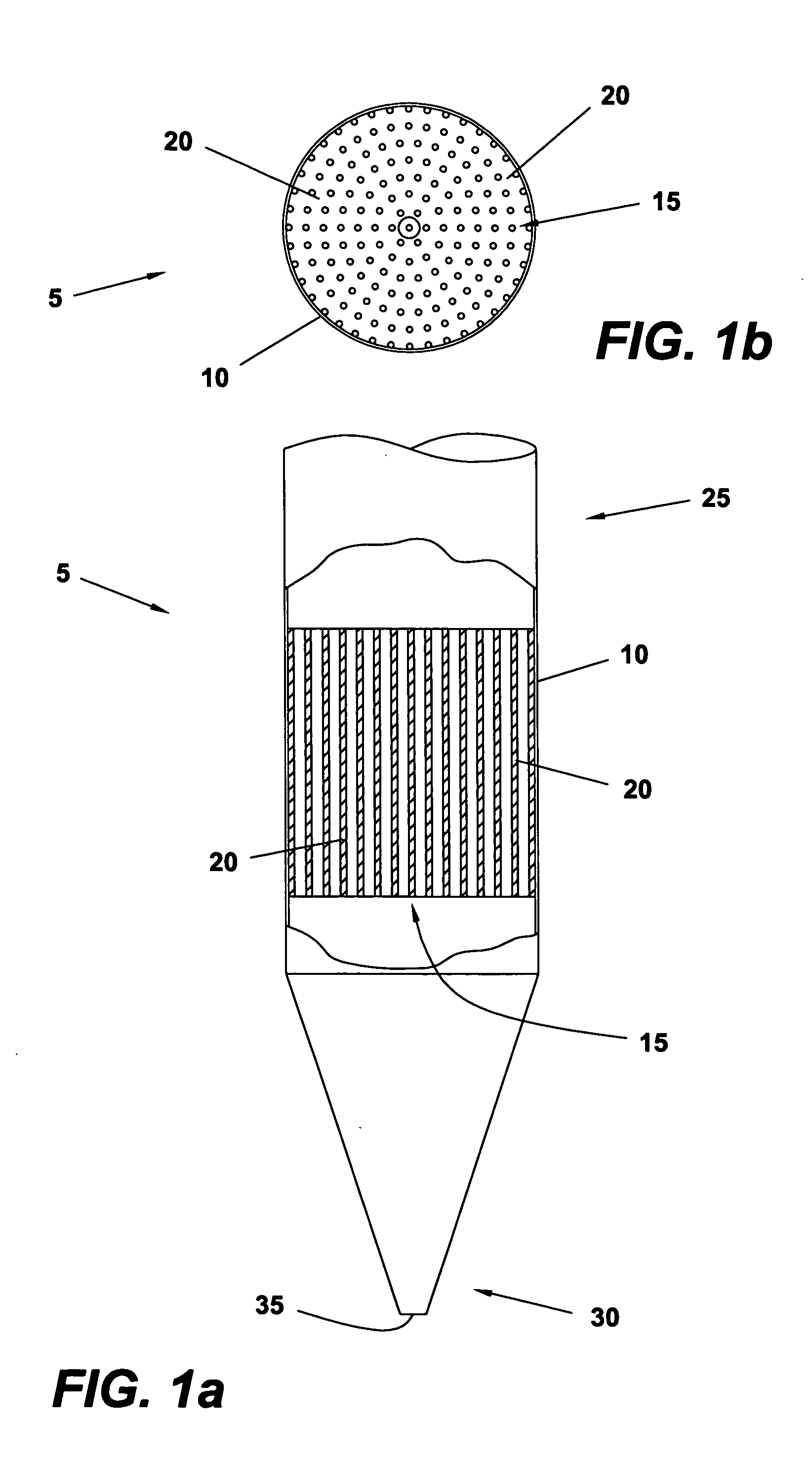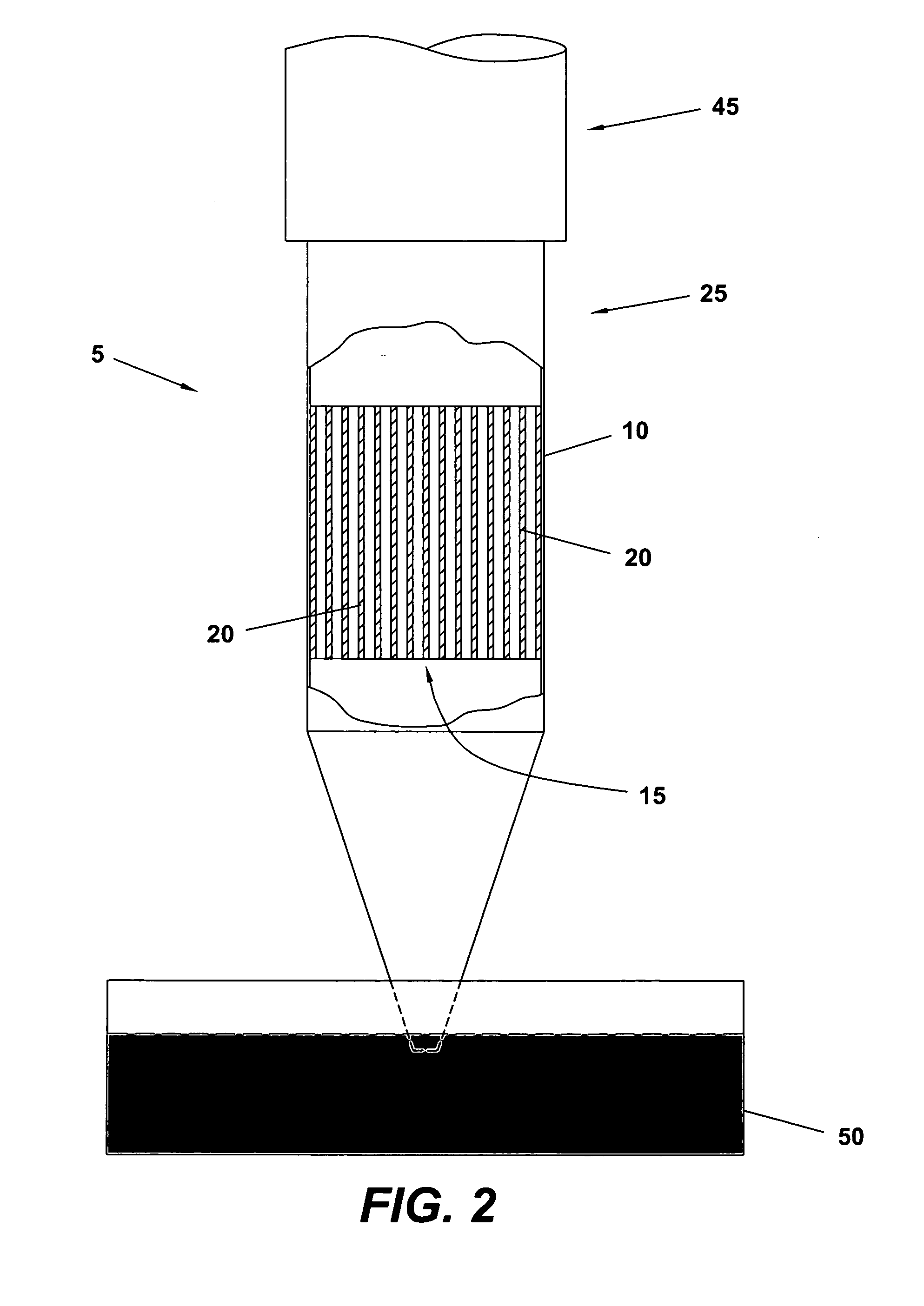Small volume liquid-liquid extraction device and method of use
- Summary
- Abstract
- Description
- Claims
- Application Information
AI Technical Summary
Benefits of technology
Problems solved by technology
Method used
Image
Examples
Embodiment Construction
)
[0028] One exemplary embodiment of a liquid-liquid extraction device of the present invention can be observed in FIGS. 1a and 1b. In this embodiment, a tube 5 is shown to have a substantially hollow body 10. The tube 5 may be a pipette or pipette tip of various shape. For example, although such is not shown for the purpose of clarity, it is likely that the tube 5 will have a tapered distal end. Preferably, the tube 5 is designed to accommodate small volume liquid samples. For example, it is contemplated that the tube 5 can be used with liquid sample volumes of approximately 50 microliters (μl)—although the tube can be used with other sample volumes as well.
[0029] Unlike common pipettes or pipette tips, a filament array 15 is suspended within the body 10 of the tube 5 of the present invention. The filament array 15 may be located at various points along the length of the tube 5 to which it is installed. For example, when the tube 5 has a tapered shape, the filament array may be loc...
PUM
| Property | Measurement | Unit |
|---|---|---|
| Volume | aaaaa | aaaaa |
| Surface tension | aaaaa | aaaaa |
| Extraction enthalpy | aaaaa | aaaaa |
Abstract
Description
Claims
Application Information
 Login to View More
Login to View More - R&D
- Intellectual Property
- Life Sciences
- Materials
- Tech Scout
- Unparalleled Data Quality
- Higher Quality Content
- 60% Fewer Hallucinations
Browse by: Latest US Patents, China's latest patents, Technical Efficacy Thesaurus, Application Domain, Technology Topic, Popular Technical Reports.
© 2025 PatSnap. All rights reserved.Legal|Privacy policy|Modern Slavery Act Transparency Statement|Sitemap|About US| Contact US: help@patsnap.com



